Other Parts Discussed in Thread: SN75176B
Hi,
Could you please confirm whether SN75176A can drop in replace SN75176B without schematic and BOM change?
And what’s the difference between SN75176A as below yellow highlight part number?

This thread has been locked.
If you have a related question, please click the "Ask a related question" button in the top right corner. The newly created question will be automatically linked to this question.
Hi Jim,
The SN75176A can be dropped in for the SN75176B in some applications the "B" version is recommended for data rates of 10Mbps while the A version is recommended for data rates of 5Mbps

If the application is 5Mbps or less then there is some there are a few spec differences which I will go over below but a drop in replacement is poissible:
DRIVER:
SN75176A
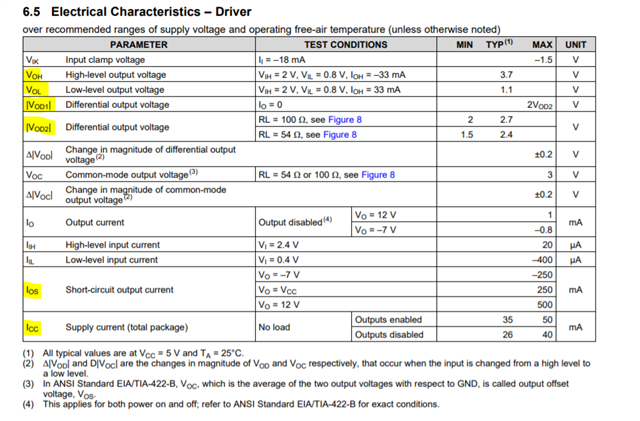
SN75176B
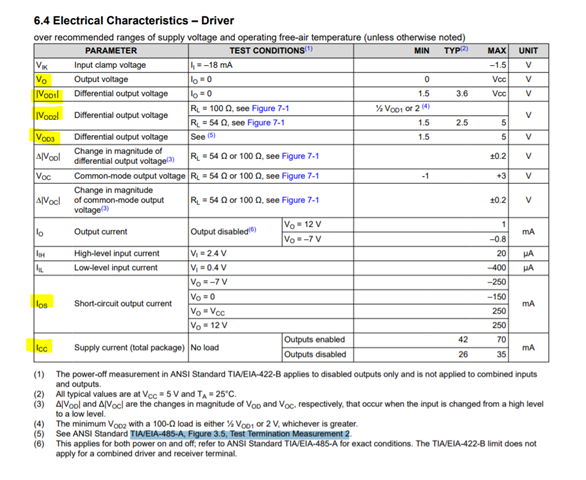
For the driver the specs that do differ or not directly spec'd on each other datasheets are highlighted.
The "A" version of the device specs VOH and VOL while the "B" version only specs the VO range - these values shouldn't really change implementation as both are still valid transceivers.
The differential outputs are also slightly different - they are still compliant to the same standards and still will work in a RS-485 application but something to be aware about.
The B version has a lower short circuit output current as well as consuming more power when the outputs are enabled but similar power consumption when disabled.
Receiver
"A" Version
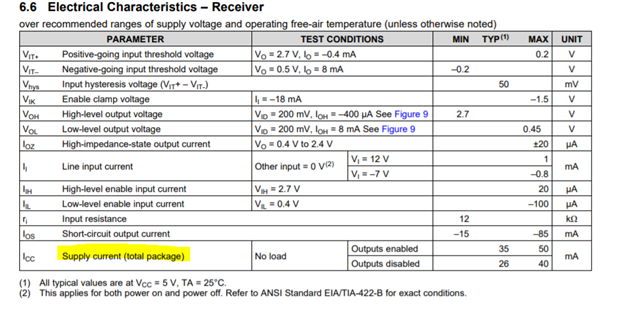
"B" Version
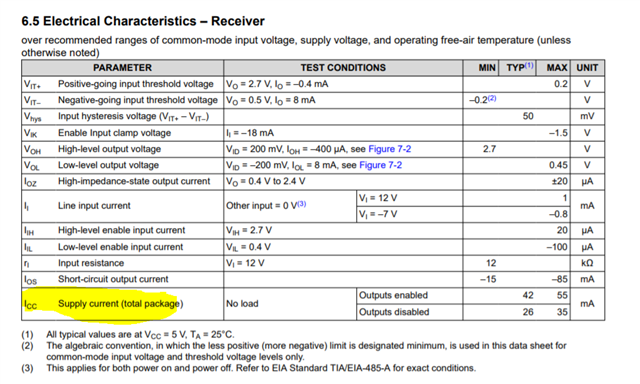
The only difference in the receiver between the devices is power consumption where the "B" version consumes a bit more current when outputs are enabled.
TIMING
The Timing tables are shown for "A" below:

"B" Version:
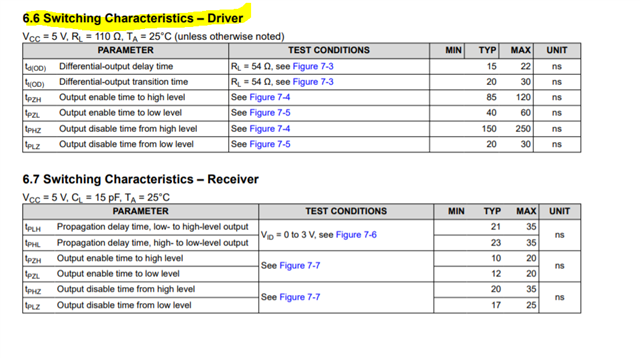
The Receiver timing is very similar (some test condition differences) between devices - the big difference is driver timing and really the differential output transition time is faster on the "B" version - allowing for a higher data rate.
So really it depends on data-rate if you can drop the "B" version in.
As for the E4 and G4 markings. E4 generally means RoHS compliant and G4 is Green (so RoHS compliant essentially) - these are older markings that exist for legacy reasons. There is no difference between the DR and DRG4 / DRE4 as they all have the same finish and are RoHS compliant. For detailed part material information please see the link here: https://www.ti.com/materialcontent/en/home;jsessionid=357BAA32793FA2D8BF178AB7459114B9.tiapp-prod-4-node10
If you have any other questions please let me know!
Best,
Parker Dodson